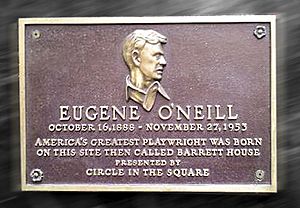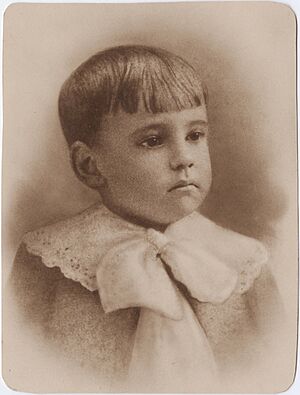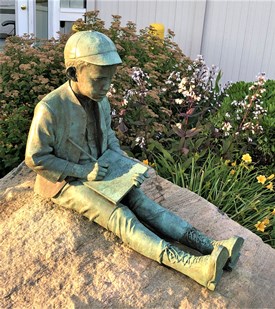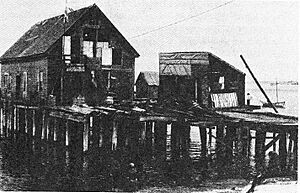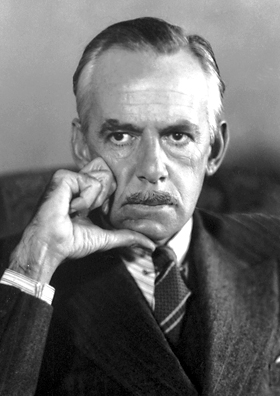Eugene O'Neill facts for kids
Quick facts for kids
Eugene O'Neill
|
|
|---|---|
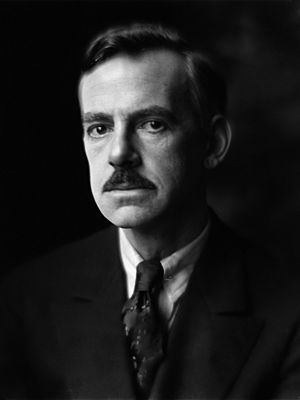
Portrait of O'Neill by Alice Boughton
|
|
| Born | Eugene Gladstone O'Neill October 16, 1888 New York City, New York, U.S. |
| Died | November 27, 1953 (aged 65) Boston, Massachusetts, U.S. |
| Occupation | Playwright |
| Notable awards | Nobel Prize in Literature (1936) Pulitzer Prize for Drama (1920, 1922, 1928, 1957) Tony Award for Best Play (1957) |
| Spouse |
Kathleen Jenkins
(m. 1909; div. 1912)Agnes Boulton
(m. 1918; div. 1929)Carlotta Monterey
(m. 1929) |
| Children |
|
| Parents | James O'Neill Mary Ellen Quinlan |
| Relatives |
|
| Signature | |
Eugene Gladstone O'Neill (born October 16, 1888 – died November 27, 1953) was a famous American writer of plays. He won the 1936 Nobel Prize in Literature. His plays were some of the first in the U.S. to use a style called realism. This style showed life as it really was, much like the plays of Anton Chekhov from Russia and Henrik Ibsen from Norway.
One of his most famous plays is Long Day's Journey into Night. Many people think it is one of the best American plays of the 20th century. O'Neill's plays often featured characters who were not rich or famous. These characters often struggled to keep their hopes alive, but sometimes ended up feeling sad and hopeless. While most of his plays were serious, he did write one well-known comedy called Ah, Wilderness!.
Contents
Growing Up
Eugene O'Neill was born in a hotel in New York City. This area is now known as Times Square. His father, James O'Neill, was an actor from Ireland. His mother, Mary Ellen Quinlan, also had Irish roots.
Because his father often traveled with his acting group, Eugene spent some time in boarding schools. In 1895, he went to a Catholic school called St. Aloysius Academy for Boys. Later, in 1900, he attended the De La Salle Institute in Manhattan.
The O'Neill family spent their summers together at the Monte Cristo Cottage in New London, Connecticut. Eugene also went to Princeton University for one year. There are different stories about why he left. Some say he didn't attend enough classes, or that he broke a window. One story even says he threw a beer bottle at the window of Professor Woodrow Wilson, who later became president.
Eugene O'Neill loved the sea very much. He spent several years working on ships. This experience greatly influenced his plays, and many of them are set on the ocean. He even joined a union for marine workers. This union worked to improve conditions for working people.
His Career as a Playwright
After getting better from a serious illness in 1912–1913, O'Neill decided to become a full-time playwright. Before this, he had worked for a newspaper, writing poems and news stories. In 1914, he took a class on writing plays at Harvard University, but he left after a year.
In the 1910s, O'Neill was part of the lively arts scene in Greenwich Village in New York City. He met many interesting people there, including the writer John Reed.
His first play, Bound East for Cardiff, was performed in 1916 by a group called the Provincetown Players. This group helped him put on many of his early works. Some of these plays, like The Emperor Jones, started in smaller theaters and then moved to Broadway.
O'Neill's first play to open on Broadway was Beyond the Horizon in 1920. It was very successful and won the Pulitzer Prize for Drama. He won more Pulitzer Prizes for plays like Anna Christie (1922) and Strange Interlude (1928). Other well-known plays include Desire Under the Elms (1924) and Mourning Becomes Electra (1931).
In 1936, Eugene O'Neill received the Nobel Prize in Literature. He was greatly inspired by the Swedish writer August Strindberg. When he accepted the Nobel Prize, O'Neill spoke a lot about how Strindberg's work influenced him. He even said he wished he could meet Strindberg in the afterlife.
After a break of ten years, O'Neill's famous play The Iceman Cometh was performed in 1946. Another play, A Moon for the Misbegotten, came out the next year. It wasn't popular at first, but now it is considered one of his best works.

O'Neill also used ancient Greek theater ideas in some of his plays. He brought back the use of masks, like those seen in old Greek and Japanese plays. Examples include The Great God Brown and Lazarus Laughed.
His Family Life
Eugene O'Neill was married three times. His first marriage was to Kathleen Jenkins from 1909 to 1912. They had one son, Eugene O'Neill, Jr. (1910–1950).
In 1917, he met Agnes Boulton, who was also a successful writer. They married in 1918 and had two children, Shane and Oona. They lived in Connecticut and Bermuda. Their marriage ended in 1929.
Less than a month after his divorce from Agnes, O'Neill married actress Carlotta Monterey. They moved to France for a while, then lived in Georgia and later in Danville, California. His house in Danville, called Tao House, is now a special historic site.
Carlotta helped O'Neill organize his life so he could focus on writing. Their marriage had its ups and downs, and they separated sometimes, but they never divorced.
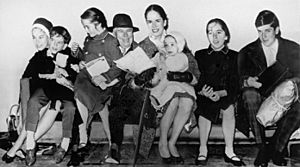
In 1943, O'Neill became distant from his daughter Oona after she married the famous actor Charlie Chaplin. O'Neill never saw Oona again. He also had distant relationships with his sons. His son Eugene Jr. passed away in 1950. Shane O'Neill also had a difficult relationship with his father.
Here is a table of his children:
| Child | Date of birth | Date of death |
|---|---|---|
| Eugene O'Neill Jr. | May 5, 1910 | September 25, 1950 |
| Shane O'Neill | October 30, 1919 | June 23, 1977 |
| Oona O'Neill | May 14, 1925 | September 27, 1991 |
Illness and Passing
For many years, Eugene O'Neill had health problems. In his last 10 years, he developed a serious illness that made his hands shake. This made it impossible for him to write. He tried to dictate his plays, but he couldn't write that way.
While at Tao House, O'Neill had planned to write a series of 11 plays about an American family. He only finished two of them: A Touch of the Poet and More Stately Mansions. As his health got worse, he wrote three plays that were largely about his own life: The Iceman Cometh, Long Day's Journey into Night, and A Moon for the Misbegotten. He finished Moon for the Misbegotten in 1943, just before he lost the ability to write.
Eugene O'Neill passed away in a hotel in Boston on November 27, 1953. He was 65 years old. His last words were: "I knew it. I knew it. Born in a hotel room and died in a hotel room." He is buried in Forest Hills Cemetery in Boston.
In 1956, his wife Carlotta decided to publish his play Long Day's Journey into Night. Eugene had asked for it not to be made public until 25 years after his death. But it was published and performed, and it received great praise. It also won a Pulitzer Prize in 1957. Many people believe this play is his best work.
His Legacy
Eugene O'Neill is remembered as one of America's greatest playwrights.
- In 1964, the Eugene O'Neill Theater Center was founded in Connecticut. It helps new plays get started.
- He is a member of the American Theater Hall of Fame.
- In 1967, the United States Postal Service honored O'Neill with a postage stamp.
- His plays are still performed and studied today.
Places to Visit
You can visit some of Eugene O'Neill's former homes:
- His home in New London, Monte Cristo Cottage, became a National Historic Landmark in 1971.
- His home in Danville, California, called Tao House, is now the Eugene O'Neill National Historic Site.
There is also a theater in New York City named after him. The Eugene O'Neill Theatre has shown many famous musicals and plays over the years.
His Works
Full-length Plays
|
One-act PlaysThese shorter plays often featured characters on a ship called Glencairn:
Other one-act plays:
|
Other Writings
- Tomorrow, 1917. A short story.
- The Last Will and Testament of an Extremely Distinguished Dog, 1940. A loving tribute to his dog.
|
See Also
 In Spanish: Eugene O'Neill para niños
In Spanish: Eugene O'Neill para niños


